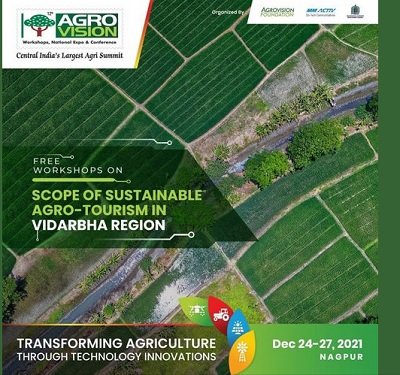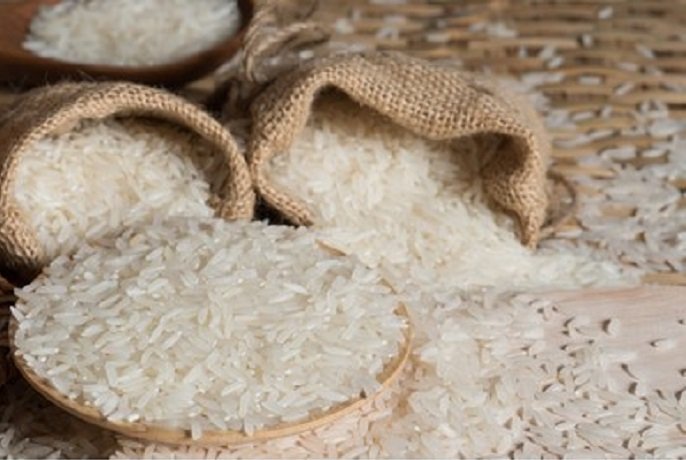The Government of India has identified floriculture as a sunrise industry and accorded it 100 per cent export oriented status. Floriculture in India, is being viewed as a high growth Industry. Commercial floriculture is becoming important from the export angle. The liberalisation of industrial and trade policies paved the way for development of export-oriented production of cut flowers. The new seed policy had already made it feasible to import planting material of international varieties.According to IMARC, a market research company, the Indian floriculture market is expected to reach a value of Rs 661 billion by 2026, exhibiting a CAGR of 19.2 per cent during 2021-2026. As per figures provided by Agricultural & Processed Food Products Export Development Authority (APEDA), the country has exported 15,695.31 Metric Tonnes (MT) of floriculture products to the world for the worth of Rs 575.98 crore/($77.84 million) in 2020-21. We take a closer look at the projection for this new ray of agri growth for India.
Floriculture has become a very lucrative sector recently owing to the increase in demand all over the globe. Due to this hike, many farmers have shifted from traditional farming of grains and veggies to cultivating flowers. As per APEDA, like every year, this year also witnessed a great demand for India’s floriculture products in international markets with the USA, The Netherlands, UAE, the UK and Germany being major importing countries of Indian floriculture.
To further strengthen this sector, on March 4, 2021, the then Union Minister Dr Harsh Vardhan, Ministry of Science & Technology, virtually launched the Council of Scientific & Industrial Research (CSIR) Floriculture Mission and exhorted scientists of CSIR laboratories across the country to develop the land available at each laboratory to be set up as a model under this mission. CSIR Floriculture Mission has been approved for implementation in 21 States and Union Territories of India wherein available knowledge base in CSIR Institutes will be utilised and leveraged to help Indian farmers and industry reposition itself to meet the import requirements.
The CSIR Floriculture Mission is expected to create opportunities for entrepreneurship development in floriculture. Infusion of latest technologies in the field of floriculture can be successfully led by CSIR. The mission will focus on commercial floral crops, seasonal/annual crops, wild ornaments and cultivation of flower crops for honey bee rearing. Some of the popular crops include Gladiolus, Canna, Carnation, Chrysanthemum, Gerbera, Lilium, Marigold, Rose, Tuberose etc. The Indian floriculture market was worth Rs 15,700 crore in 2018, and it is projected to reach Rs 47,200 crore by 2024.
Elaborating further on this sector, Omkar Baban Dangale, CA, BSD Farms, Pune, stated, “It’s said – “Future is what we create,” and for floriculture it’s all with the cultivators and farmers like us to create a future for the industry. The Floriculture Industry will be blooming as the government is also focusing its attention to agriculture by educating and providing subsidies to use modern technologies like temperature controlled greenhouse, drip irrigation systems and use of cold storages. Having the above technologies at ease will be the greatest advantage to the floriculture Industry in the future.”
Echoing similar sentiments, Vaibhav Sharma, Founder & Director, impexperts – world of import export said, “Country’s floriculture sector is blossoming well because we have some of the best quality home grown products for the international market. For example, Indian roses grown in Bengaluru and Pune have the biggest demand in Europe and the United Kingdom. Similarly, during the time of Valentine’s day and Christmas, flower export from India is at peak especially for beautiful Indian roses. Apart from all these, country’s domestic consumption of floriculture products is also on the higher-side making the industry rightly poised for exponential growth in both domestic and international market.”
Adding organic aroma – the fragrance sector
Like many sectors, floriculture industry too has an allied sector that has been one of the most driving forces for this industry. India has always been a land of olfactory indulgence, where aromatherapy, incense and ittar have existed since ancient times, where essential oil perfume were a part of the ancient royal lore. The earliest scents used were the healing scents introduced through Ayurveda, which recommended the use of aromatic herbs and fragrant plants for mental well-being, beauty, treatment of ailments, hygiene and age-control which are well known even today. This traditional fragrance industry in India has seen vast changes in the recent years with the introduction of technology and wider usage. The Indian fragrance industry is one of the largest in terms of production, consumption and at present, the fragrance market is set to grow and offer innumerable opportunities for new entrants to grow in this market.
The application of pure flower extracts in perfumery is mainly in fine fragrance and aromatherapy markets. COVID-19 has reiterated and increased awareness to maintain a healthy mood and to reduce stress. People are finding various ways to reduce stress and Aromatherapy is definitely a big help. Perfumes also exhibit a sense of hygiene and builds confidence in oneself, and today’s youth is exceedingly aware of this thought. The rising disposable income and increased consumer awareness in India is pushing the growth of natural fragrances.
The traditional process of fine fragrance manufacturing was more based on subjective parameters, olfactory, consistency and colour being the main elements. To understand the future of fine fragrances, many companies have built up their technological capability with best-in-class equipment. The use of sophisticated analytical test equipment like gas chromatography (GC) and gas chromatography mass spectrometry (GC-MS) along with a full-fledged application lab provided us more insight into the isolation and consumer preference of fragrance molecules. Now we can develop several fragrance notes from the same flower through various molecule profiles by changing the process.
Enlarging on the performance and future opportunities of this sector, Anirudh Ranga, Managing Director, Natural And Essential Oils Private Limited stated, “The global flavours and fragrance market was valued at $24 billion in 2020 and India stood at $500 million (around Rs 3,600 crore). In order to meet the ever increasing demand, we have transformed the way we source floral raw materials. With the use of technology such as DNA fingerprinting and Internet of Things (IOT) in agriculture and blockchain we are able to procure better quality flowers which are fully traceable at fair price while ensuring sustainability. The raw material for all our strategic products is now obtained through contract farming and In-house cultivation. Due to this structure, we can maintain exceedingly stringent pesticide, phthalates, and heavy metal limits in our products.”
Polyhouse technology – a catalyst for Floriculture
The concept of Polyhouse is derived from greenhouses that were constructed on wooden frames where the glass was used as a cladding material. However, with the introduction of plastic technology in agriculture, glass was replaced by plastic film of high quality; 200 microns thick, with a three year guarantee against degradation due to UV and weather and wooden frames were replaced by GI steel frames. These tweaks are helping to promote polyhouse technology in and across the country.
Dr (Prof.) Harish Hirani, Director, CSIR-Central Mechanical Engineering Research Institute (CMERI), Durgapur inaugurated a ‘Naturally Ventilated Polyhouse Facility’ and laid foundation stone of ‘Retractable Roof Polyhouse’ at Ludhiana in Punjab. Informing more about the technology, he stated, “The farmers face number of problems such as excessive or insufficient cold, heat, rain, wind, and other factors associated with insufficient transpiration, and also crop losses in India due to insect pests is about 15 per cent at present and this loss may increase as climate change lowers the plant defense system against insects and pests. To some extent these problems can be overcome by conventional polyhouse. Conventional polyhouse have a stationary roof to reduce the effect of weather anomalies and pests. However, there are still disadvantages due to roof covering which sometimes lead to excessive heat, and insufficient light (early morning). Besides this, they are also prone to insufficient levels of CO2, transpiration and water stress. A combination of open field conditions and conventional Polyhouse conditions is a more robust way to deal with climate change and associated problems in the future.”
However, in order to overcome these challenges of polyhouse, CMERI Extension centre, Ludhiana is installing a ‘Retractable Roof Polyhouse Technology’. This all-weather structure will have an automatic retractable roof which will be operated based on weather conditions and crop requirements from the conditional database using PLC software. This ongoing development will help farmers to cultivate both seasonal and off-season crops, which can fetch higher yield, firmer and high shelf-life produce by creating optimal indoor microclimate conditions compared to conventional open field tunnels and naturally ventilated poly houses, and also it is a viable technology for organic cultivation.
Informing further on this new technology, Jagdish Manik Rao, Senior Scientist, CMERI Extension centre, Ludhiana stated, “The retractable roof will be used to manipulate sun light quantity, quality and duration, water stress, humidity, carbon di-oxide levels, and crop and soil temperatures.”
This system is being developed in collaboration with CSIR- Institute of Himalayan Bioresource Technology (IHBT), Palampur, Himachal Pradesh and in the process of integrating Artificial Intelligence in automating the polyhouse based on the crop and weather requirements and providing an IoT enabled farmer friendly user interface.
Governmental push
Realising the immense potential of this trade, the Government of India has been constantly pushing and promoting floriculture farming and business across the nation. Various incentives offered by the government have enabled the setting up of a number of floriculture units for producing and exporting flowers which have obtained technical know‐how from Dutch and Israeli consultants. Tax benefits are offered to new export oriented floriculture companies in the form of income‐tax holidays and exemption from certain import duties such as reduction of duties for import of flower seeds and tissue‐cultured plants. Financial support is provided for setting up of pre‐cooling and cold storage units, as well as for using improved packaging material.
Moreover, the central government along with various state governments has managed to establish Agri Export Zones across the country. The sole purpose of these zones is to provide healthy remunerations to the floriculture farmers and to increase the level of competition in the domestic market. Presently, there are six Agri Export Zones installed in the country for the development of floriculture in India.
In order to improve livelihood opportunities and to bring prosperity to NER (North Eastern Region) including Sikkim and Himalayan states, Government of India has launched a Horticulture Mission for North East and Himalayan States (HMNEHS) for Integrated Development of Horticulture. The mission is based on the ‘end‐to‐end approach’ taking into account the entire gamut of horticulture development with all backward and forward linkages in a holistic manner. As per the Operational Guidelines 2010 of HMNEHS, the Mission will operate in North Eastern States (Assam, Arunachal Pradesh, Manipur, Mizoram, Meghalaya, Nagaland, Sikkim and Tripura) and Himalayan States (Jammu and Kashmir, Himachal Pradesh and Uttarakhand) to promote holistic growth of horticulture sector covering fruits, vegetables, flowers etc. HMNEH is a centrally sponsored scheme for which 100 per cent assistance is provided by the Government of India.
Before 2014-15, the mission was being implemented through four Mini Missions i.e. Mini Mission-I (Research), Mini Mission-II (Production & Productivity Improvement), Mini Mission-III (Post Harvest Management & Marketing) and Mini Mission-IV (Processing & Value addition). During 2014-15 with a view to promote holistic development of horticulture sector in the country, Department of Agriculture and Cooperation, Ministry of Agriculture, Government of India, has approved a Mission for Integrated Development of Horticulture (MIDH) by subsuming ongoing schemes of National Horticulture Mission (NHM), Horticulture Mission for North East and Himalayan States (HMNEH), National Bamboo Mission (NBM), National Horticulture Board (NHB), Coconut Development Board (CDB) and Central Institute for Horticulture (CIH), Nagaland. HMNEH continues to be implemented in all North East and Himalayan states with revised cost norms and pattern of assistance during the remaining period of 12th five year plan. All the four mini missions of HMNEH now have been clubbed in the scheme.
In order to promote polyhouse systems across the country, Centre along with the state governments is providing subsidies to encourage shade house and polyhouse farming. Activities such as construction of greenhouses, shade net house, plastic mulching and plastic tunnels, anti-bird/ hail nets are being promoted under Mission for Integrated Development of Horticulture (MIDH) guidelines. National Horticulture Board (NHB) and National Horticulture Mission (NHM) under MIDH guidelines provide subsidies to farmers. NHB provides 50 per cent subsidy on a project cost per beneficiary and the NHM which is a mission scheme of the government, provides a subsidy of 50 per cent of the project cost.
Through these schemes, farmers can install these units at almost half the cost. Additionally, every state is running its own State Horticulture Mission (SHM) where a top-up subsidy of 15 – 40 per cent or more depending on state government policy may be provided on the 50 per cent provided by NHM, making the total subsidy ranging between 50 and 90 per cent state wise. So, the input cost for the farmer going for polyhouse cultivation is low and affordable.
Roadmap ahead
The floriculture industry relies heavily on innovation. As repeatedly stated, improved agricultural practices such as organic farming and intelligent technology based farming will increase flower yield per acre and thus income.
Elaborating further on the future growth of floriculture sector in India, Omkar Baban Dangale stated, “The best opportunities for cultivators in floriculture is that, as many were affected by COVID-19 and were unable to run their polyhouses, one can approach them to buy their polyhouses and their set-ups. This is the best opportunity as one can rapidly expand their business. Taking tax into consideration, floriculture falls under the term ’agricultural income’ as per Income Tax and the whole of the income is tax free and it’s a direct saving of almost 30 per cent of your money you make from your business. People should take advantage was such provisions and shift towards floriculture.”
Further, there is a strong need to promote rainwater harvesting and solar farming. Similarly, development of greenhouse clusters, promotion of crop-specific self-help groups should be encouraged. Training and entrepreneurship promotion are needed for production and export of dry flowers. Rural transportation, logistics, mobile cold storage facilities need to be created for the loose flower sector, which is the mainstay of Indian floriculture.
Anirudh Ranga opined that the rise of the perfumery industry, as well as various policy initiatives from the Central and State Governments, facilitated the growth of floriculture in India. The Indian floriculture market is expected to reach Rs 661 billion by 2026, growing at a 19.2 per cent CAGR. The metros and larger Indian cities are currently the country’s largest consumers of flowers. The consumption of flowers is expected to rise further as a result of urbanisation and the growing influence of Western culture.
Aside from aesthetic and decorative purposes, the essential oil and perfume industries make extensive use of flower produce. Because this industry is expanding, flower consumption will rise as well. Following the long COVID-19 lockdown, the demand for perfumes, essential oils, and direct flowers for various purposes has increased, bringing back happy memories to the floriculture industry.
Nitin Konde
The Government of India has identified floriculture














